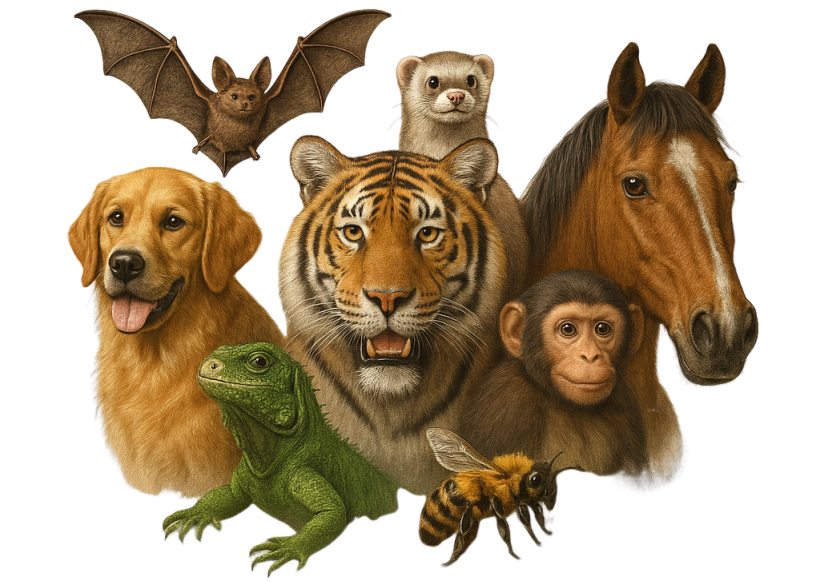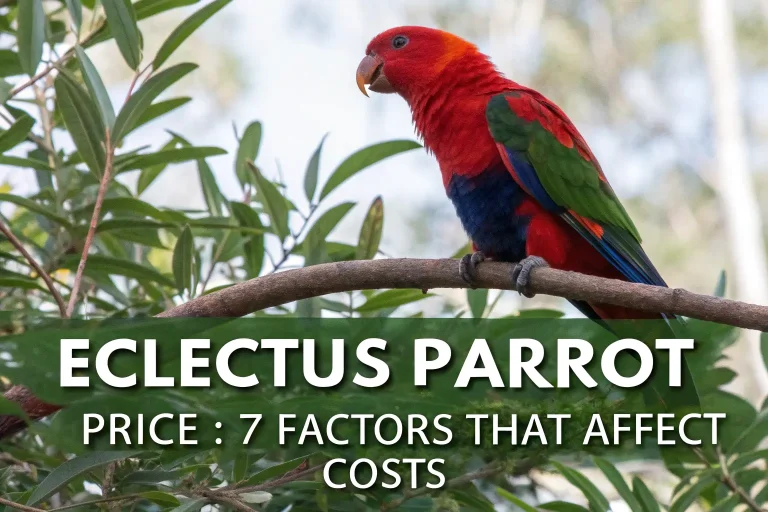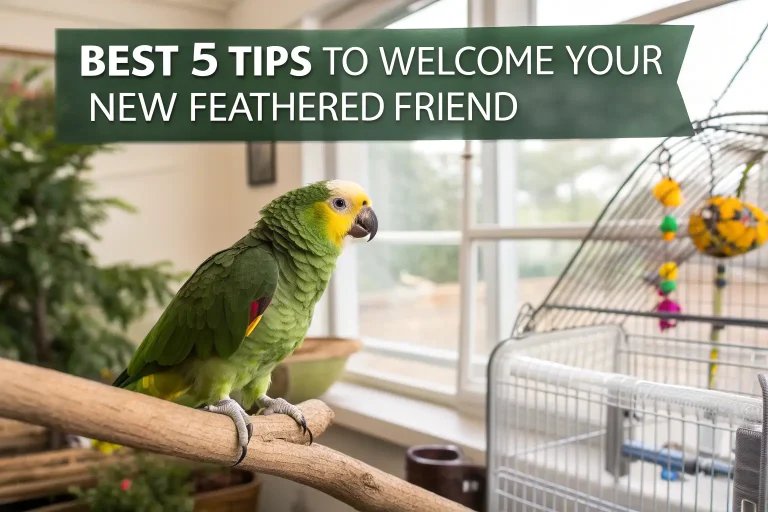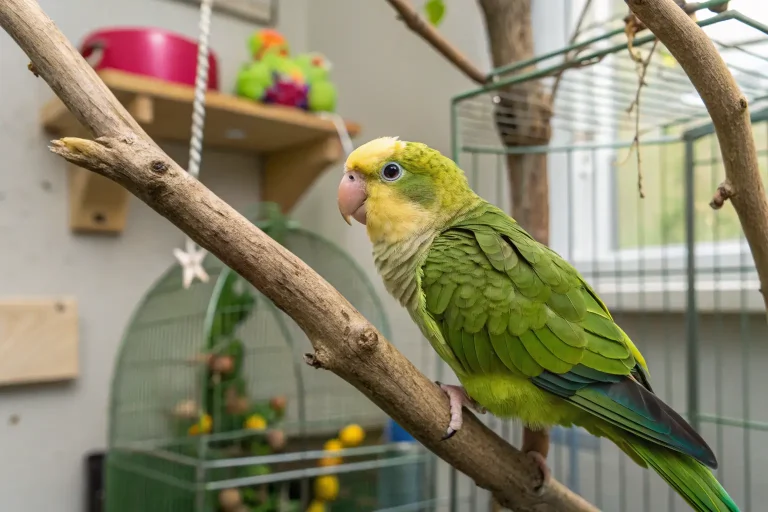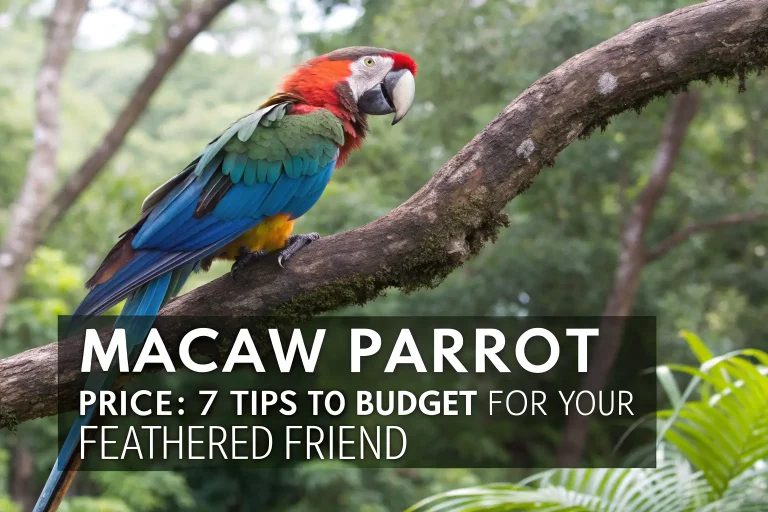African Grey Parrots Sale: 7 Essential Tips to Choose Your Feathered Friend!
Are you considering bringing home one of nature’s most intelligent avian companions? The african grey parrots sale market offers incredible opportunities to find your perfect feathered friend, but knowing how to select the right bird requires careful consideration. These remarkable companions can become cherished family members for decades, making your selection process crucial. This comprehensive guide provides seven essential tips to help you navigate the african grey parrots sale landscape with confidence, ensuring you find a healthy, well-adjusted bird that will thrive in your home.
Introduction
African Grey parrots stand among the most intellectually gifted creatures in the animal kingdom, often compared to five-year-old human children in their cognitive abilities. These magnificent birds have captured the hearts of bird enthusiasts worldwide with their exceptional talking abilities, problem-solving skills, and emotional intelligence.
Before diving into the african grey parrots sale market, understanding these remarkable creatures is essential. Their intelligence comes with complex needs—social, emotional, and environmental—that prospective owners must be prepared to meet. A well-chosen African Grey can become a loving companion for up to 50-70 years, making this decision particularly significant.
Did you know that an African Grey parrot named Alex, studied by Dr. Irene Pepperberg, learned over 100 words, could identify colors, shapes, and materials, and even grasped the concept of zero? This extraordinary capability exemplifies why these birds deserve careful consideration before bringing one home.
Species Overview
Scientific Name: Psittacus erithacus
African Greys belong to the Psittacidae family, with the scientific name Psittacus erithacus. Their classification places them among the true parrots, known for their intelligence and vocal capabilities.
Physical Characteristics
These medium-sized parrots typically weigh between 12-16 ounces (340-450g) with a length of approximately 12-14 inches (30-35cm). Their most distinctive feature is their stunning ash-gray plumage covering most of their body, contrasted by a bright red tail. Their beaks are black and powerful, designed for cracking nuts and seeds in the wild. African Greys have dark eyes that gradually change from black to gray to yellow or light silver as they mature, often serving as an indicator of age.
Subspecies
When exploring the african grey parrots sale market, you’ll encounter two primary subspecies:
Congo African Grey (Psittacus erithacus erithacus): The larger of the two subspecies, featuring lighter gray feathers and a bright scarlet tail. They typically measure 12-14 inches and are more commonly available.
Timneh African Grey (Psittacus erithacus timneh): Slightly smaller at 10-12 inches, with darker charcoal-gray plumage and a maroon tail. Timnehs are generally considered to adapt more quickly to new environments and may begin talking at a younger age.
Understanding these differences is crucial when deciding which subspecies might better suit your lifestyle and preferences.
Habitat and Distribution
Natural Habitat
African Grey parrots are native to the dense rainforests and savannas of Central and Western Africa. They thrive in humid, tropical environments where they can forage among the canopy for fruits, nuts, and seeds. These birds are highly adaptable but prefer regions with abundant tall trees for nesting and protection.
Geographic Range
In the wild, African Greys inhabit a broad belt across equatorial Africa. Congo African Greys are found primarily in the Congo Basin, extending to Kenya, Tanzania, Angola, and the Ivory Coast. Timneh African Greys occupy a smaller range in the western portions of Africa, including Sierra Leone, Liberia, Mali, and the western parts of the Ivory Coast.
Adaptations
These parrots have evolved remarkable adaptations that serve them well both in the wild and as pets. Their strong beaks enable them to crack tough nuts and seeds, while their zygodactyl feet (two toes pointing forward, two backward) provide exceptional dexterity for climbing and manipulating objects. Their intelligence represents perhaps their most significant adaptation, allowing them to solve complex problems and remember solutions. This cognitive ability has helped them survive in challenging environments but also means they require substantial mental stimulation in captivity.
Diet and Feeding Habits
What They Eat
In their natural habitat, African Greys consume a diverse diet of fruits, nuts, seeds, berries, leaf buds, and occasional insects. This varied nutrition profile is important to consider when browsing the african grey parrots sale market, as domestic birds require a similarly diverse diet to maintain optimal health.
A properly fed captive African Grey should receive:
- High-quality pellet food (40-60% of diet)
- Fresh fruits and vegetables (30-40%)
- Nuts, seeds, and healthy treats (10-20%)
Avoiding avocado, chocolate, caffeine, and alcohol is essential, as these are toxic to parrots.
Foraging Behavior
African Greys are natural foragers who spend hours searching for food in the wild. This instinctual behavior doesn’t disappear in captivity, making foraging toys and puzzles essential enrichment tools. Without appropriate outlets for this behavior, these intelligent birds may develop destructive habits or behavioral issues.
Dietary Needs
These parrots have specific nutritional requirements, including:
- Calcium and vitamin D3 for proper bone development
- Vitamin A for immune function and feather health
- Protein for muscle maintenance and feather growth
- Limited fat intake to prevent obesity
When considering an african grey parrots sale, inquire about the bird’s current diet and eating habits, as dietary transitions should be gradual to prevent refusal of new foods.
Behavior and Social Structure
Social Behavior
African Greys are highly social birds that live in large flocks of hundreds or even thousands in the wild. This social nature translates to their needs in captivity—they require regular interaction and companionship to thrive. A neglected Grey can develop serious psychological issues, including feather plucking, aggression, and self-mutilation.
When evaluating birds during an african grey parrots sale, observe how they interact with humans and other birds. A well-socialized parrot will show curiosity rather than extreme fear or aggression.
Communication
These parrots are renowned for their exceptional communication abilities, which extend far beyond simple mimicry. African Greys can:
- Learn hundreds of words and use them contextually
- Mimic household sounds with astonishing accuracy
- Understand simple concepts and questions
- Communicate their needs and emotions through body language and vocalizations
Their communication prowess makes them particularly sensitive to household dynamics, often picking up on tension or conflict between family members.
Mating and Reproduction
In the wild, African Greys typically mate for life, forming strong pair bonds. They reach sexual maturity between 3-5 years of age, nesting in tree cavities where females lay 2-4 eggs per clutch. Both parents participate in incubation and chick-rearing.
For pet owners, understanding reproductive behaviors is important as mature birds may exhibit hormonal behaviors during breeding seasons, including increased territoriality or aggression. Limiting daylight hours artificially (12 hours maximum) can help reduce hormonal behaviors in captive birds.
Conservation Status
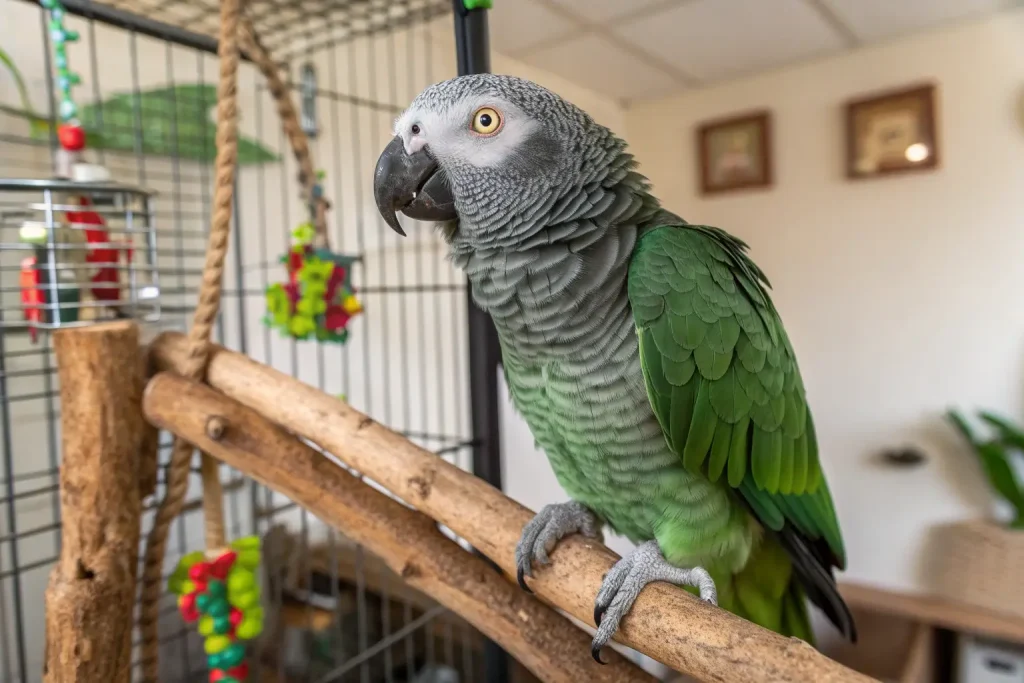
Endangerment Level
According to the International Union for Conservation of Nature (IUCN), African Grey parrots are classified as Endangered. Wild populations have declined precipitously by 50-79% over three generations (approximately 47 years). This endangered status makes ethical sourcing particularly important when considering an african grey parrots sale.
Threats
The primary threats to wild African Grey populations include:
- Habitat destruction: Deforestation for agriculture and logging has dramatically reduced suitable habitat.
- Illegal trapping: Despite CITES protections, thousands of birds are still captured annually for the illegal pet trade.
- High mortality rates during capture and transport: Up to 60% of wild-caught birds die before reaching international markets.
Conservation Efforts
Several conservation initiatives aim to protect remaining wild populations:
- CITES (Convention on International Trade in Endangered Species) banned the international commercial trade of wild African Greys in 2017
- Rehabilitation and release programs in native habitats
- Breeding programs in zoological institutions
- Education and community engagement in range countries
When considering an african grey parrots sale, seek birds from reputable breeders who contribute to conservation efforts rather than depleting wild populations.
7 Essential Tips for Choosing Your African Grey
1. Verify Age and Origin
When exploring the african grey parrots sale market, always verify the bird’s age and origin. Captive-bred birds make better pets as they’re accustomed to human interaction from hatching. Request to see:
- CITES documentation (especially for imported birds)
- Closed leg bands with identifying information
- Breeding records and hatch date
Young birds (under one year) adapt more easily to new environments but require more training, while older birds may have established personalities but potentially carry behavioral baggage from previous homes.
2. Assess Health and Physical Condition
Before finalizing any african grey parrots sale, thoroughly evaluate the bird’s health:
- Bright, clear eyes without discharge
- Clean nostrils and beak
- Smooth, well-groomed feathers without bald patches
- Proper weight (neither too thin showing keel bone nor overweight)
- Regular droppings (brown/green with white urates)
- Alert posture and steady balance on perch
Request recent veterinary records and, ideally, arrange a pre-purchase exam with an avian veterinarian specializing in exotic birds.
3. Evaluate Temperament and Behavior
The bird’s personality will significantly impact your relationship for decades to come. Spend substantial time interacting with potential birds before purchase:
- Observe how the parrot reacts to strangers versus familiar people
- Look for curious, calm behavior rather than excessive fearfulness or aggression
- Test basic handling tolerance (stepping up, allowing head scratches if appropriate)
- Listen for varied vocalizations rather than constant screaming
Remember that even the best-tempered African Grey will go through adjustment periods and occasional “teenage” phases of testing boundaries.
4. Research the Breeder or Seller
The quality of the african grey parrots sale source directly impacts the bird’s health and behavior:
- Visit the breeding facility if possible
- Ask about socialization practices for young birds
- Inquire about diet, enrichment, and handling protocols
- Check reviews and speak with previous customers
- Avoid sellers unwilling to answer questions or provide documentation
Reputable breeders will be invested in their birds’ long-term welfare and may even request to interview you as a potential owner.
5. Understand Total Ownership Costs
African Greys represent a significant financial commitment beyond the initial purchase price:
- Initial setup costs ($500-$1,000 for quality cage, toys, perches)
- Annual veterinary care ($200-$500 for wellness exams)
- Quality diet ($50-$100 monthly)
- Regular toy replacement ($30-$50 monthly)
- Emergency veterinary fund ($1,000-$3,000 recommended)
- Potential boarding costs during travel ($25-$50 daily)
Before pursuing any african grey parrots sale, ensure your budget can accommodate these ongoing expenses for potentially 50+ years.
6. Prepare Your Home Environment
Before bringing your new companion home, evaluate your living situation:
- Sufficient space for a large cage (minimum 36″W × 24″D × 48″H)
- Bird-safe room free of toxins (non-stick cookware, scented products, houseplants)
- Noise tolerance among household members and neighbors
- Time availability for 3-4 hours of daily interaction
- Climate control appropriate for tropical species
- Secure windows and doors to prevent escape
7. Commit to Ongoing Education
The most successful African Grey owners maintain a learning mindset:
- Join parrot owner communities and forums
- Read books by avian behavior specialists
- Attend bird owner workshops and conventions
- Establish a relationship with an avian veterinarian
- Consider training classes for both you and your bird
The african grey parrots sale is just the beginning of your journey with these incredible birds—ongoing education will ensure a harmonious relationship for decades.
Interesting Facts
These fascinating facts highlight why African Greys are so sought-after in the african grey parrots sale market:
African Greys can recognize and differentiate between numerous shapes, colors, and materials, demonstrating cognitive abilities comparable to dolphins and great apes.
They possess logical reasoning skills, with some documented cases of birds using deductive reasoning to solve novel problems without prior training.
These parrots display empathy, often comforting distressed owners or other birds with gentle vocalizations or physical contact.
African Greys have remarkable memory capabilities, remembering locations, people, and events from years past.
They can understand the concept of object permanence (knowing objects continue to exist when out of sight), a cognitive milestone typically reached by human children around 8 months of age.
Some African Greys develop personal preferences for music genres or television programs, showing consistent reactions to favored entertainment.
These birds are one of the few species that can dance in rhythm with music, adjusting their movements to match tempo changes.
Tips for Caring for African Greys
Housing Requirements
Proper housing is essential for birds purchased through any african grey parrots sale:
- Cage size: Minimum 36″W × 24″D × 48″H, preferably larger
- Bar spacing: 3/4″ to 1″ to prevent escape or injury
- Materials: Stainless steel or powder-coated metals (avoid zinc or lead)
- Placement: Away from drafts, direct sunlight, and kitchen fumes
- Perches: Various diameters (3/4″ to 1.5″) and textures for foot health
- Toys: Rotating selection of foraging, chewing, and puzzle toys
Mental Stimulation
African Greys’ exceptional intelligence demands robust mental exercise:
- Daily training sessions (15-20 minutes, several times daily)
- Puzzle toys with hidden treats
- Regular introduction of new objects and experiences
- Supervised exploration of different household areas
- Social interaction with various family members
- Background sounds like music or nature recordings when alone
Health Considerations
Preventative health care includes:
- Annual avian veterinary checkups
- Regular weight monitoring (purchase a gram scale)
- Proper diet with supplementation as recommended
- Air quality management (avoid aerosols, scented products)
- Recognizing early signs of illness (changes in droppings, appetite, behavior)
- Wing, beak, and nail maintenance
Common health issues to monitor for include:
- Feather plucking (psychological and physical causes)
- Respiratory infections
- Vitamin A deficiency
- Calcium deficiency leading to egg binding in females
- Fatty liver disease from poor diet
Role in the Ecosystem
Ecological Importance
In their natural habitat, African Greys fulfill several crucial ecosystem functions:
- Seed dispersal for numerous plant species
- Pollination while feeding on nectar and flowers
- Controlling insect populations through opportunistic feeding
- Creating nesting cavities later used by other wildlife
- Serving as prey for larger predators like eagles and monkeys
Their foraging habits help maintain forest diversity by affecting which plant species proliferate through selective seed dispersal.
Impact of Decline
The declining wild African Grey population has measurable ecological consequences:
- Reduced seed dispersal affecting forest regeneration patterns
- Changed plant community compositions in areas where they’ve disappeared
- Disrupted food chains affecting both predator and prey species
- Potential loss of unique plant species dependent on their dispersal methods
This ecological importance underscores why ethical sourcing in the african grey parrots sale market matters—supporting captive breeding helps reduce pressure on wild populations.
Conclusion
Bringing an African Grey parrot into your life represents both an extraordinary privilege and a significant responsibility. These remarkable birds offer intelligence, companionship, and personality that few other pets can match, but they require dedicated care, substantial time investment, and long-term commitment.
By following the seven essential tips outlined in this guide, you’ll be better equipped to navigate the african grey parrots sale market with confidence and find a feathered friend who will thrive in your care. Remember that the initial purchase represents just the beginning of what could become a 50-70 year relationship—one filled with learning, communication, and mutual companionship.
Whether you’re drawn to the larger Congo African Grey or the slightly smaller Timneh, the most important factors are ethical sourcing, proper preparation, and ongoing commitment to meeting your bird’s physical, emotional, and intellectual needs. When done right, sharing your life with an African Grey creates a uniquely rewarding bond with one of nature’s most intelligent and emotionally complex creatures.
Frequently Asked Questions
How much does an African Grey parrot typically cost?
African Grey parrots generally range from $1,500 to $3,500 depending on age, subspecies, and breeding quality. Congo African Greys typically command higher prices than Timnehs. Hand-raised babies with documented health records from reputable breeders represent the higher end of the price range. Adoption fees for rescued birds may be lower ($500-$1,000) but often come with additional requirements for experienced homes.
What’s the difference between hand-fed and parent-raised African Greys?
Hand-fed African Greys are removed from parents early and raised by humans, resulting in birds that typically bond more easily with people and show less fear of handling. Parent-raised birds remain with their biological parents longer, developing more natural behaviors but potentially requiring more socialization work. Many breeders use a hybrid approach: parent-raising initially, followed by hand-feeding after 2-3 weeks for optimal development and socialization.
How can I tell if an African Grey is male or female?
African Greys show minimal sexual dimorphism, making visual sex determination nearly impossible. Definitive sexing requires either:
- DNA testing (blood feather or blood sample)
- Surgical sexing by an avian veterinarian
- Endoscopy examination
Many reputable african grey parrots sale sources will provide DNA sexing results for their birds, though behavior and personality show little correlation with sex in this species.
How long does it take for an African Grey to learn to talk?
African Greys typically begin developing speech between 12-18 months of age, though some start earlier or later. Most birds have a vocabulary of 5-10 words by age 2 and continue expanding their repertoire throughout their lives. Timnehs often begin speaking earlier than Congos. Speech development depends heavily on consistent interaction, repetition, and positive reinforcement, with some birds eventually learning hundreds of words and phrases.
Can African Greys live with other pets?
African Greys can coexist with other pets under careful supervision, but safety must always be prioritized. Dogs and cats represent potential predators, and even gentle pets may instinctively chase or attack birds. Some Greys develop positive relationships with other household pets, while others remain fearful. Never leave different species unsupervised together, regardless of their previous interactions. Other bird species can make suitable companions, though individual compatibility varies.
What’s the difference between wild-caught and captive-bred African Greys?
Captive-bred African Greys are hatched and raised in domestic settings, making them better adapted to human environments, generally healthier, and free from the trauma of capture and transport. Wild-caught birds (now illegal in many jurisdictions) often exhibit more fearfulness, stress behaviors, health issues, and difficulty bonding with humans. Always choose captive-bred birds from the african grey parrots sale market, which supports sustainable breeding rather than depleting endangered wild populations.
How much daily attention do African Greys require?
African Greys need a minimum of 3-4 hours of direct interaction daily, though this can be divided throughout the day. They require:
- Out-of-cage time (2+ hours daily in a safe environment)
- Direct social interaction and training
- Supervised enrichment activities
Even when not directly interacting with their human companions, Greys benefit from being in family spaces where they can observe household activities. Social deprivation is extremely detrimental to their psychological well-being and commonly leads to behavioral problems.
